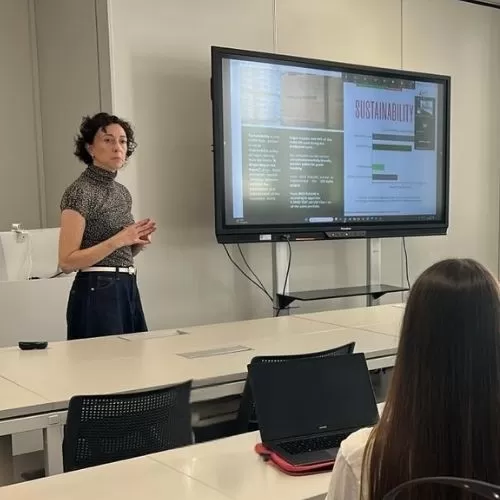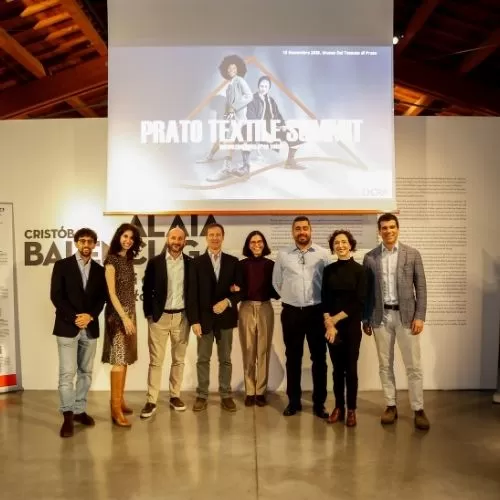12 May 2025
Textile scraps: from waste to new resource
Strategies and solutions for textile waste recovery
In the textile industry, textile waste is an inevitable part of the production process. It includes materials generated during spinning, weaving, or garment manufacturing—such as fabric scraps, excess yarn, offcuts, and unused remnants. These heterogeneous materials, often varied in composition and color, are typically treated as waste but actually represent a valuable resource if included in a circular recovery and reuse process. In a circular economy perspective, understanding how to recycle textile waste is a key step toward greater industry sustainability.
Why textile scraps is an environmental and operational issue
Every year, the fashion industry generates millions of tons of textile waste. According to the European Environment Agency, in 2020 the European Union generated approximately 6.95 million tons of textile waste—about 16 kg per person. Of this, 82% came from post-consumer waste, while the remaining 18% consisted of production scraps or unsold textiles, including offcuts, excess yarn and remnants. These production scraps represent a largely untapped opportunity within a circular economy framework.
If not recovered and reused, these materials often end up in landfills or are incinerated, creating both environmental and economic consequences. The failure to recover textile waste not only exacerbates the issue of waste management but also results in a significant loss of resources—such as energy, water, and raw materials—used during initial production. Paradoxically, this remains a challenge that companies frequently overlook. Failure to recover textile scraps results in a significant waste of resources used in the initial production stage, as well as contributing to the accumulation of waste. Efficient management of industrial textile scraps requires traceability and classification systems to streamline their selection and reintegration into the production cycle, overcoming challenges linked to material variety and the lack of shared industry standards.
The challenges of recycling textile waste
These issues reveal the many complex challenges tied to textile waste recovery. A key difficulty is the blended composition of many fabrics—such as combinations of polyamide, elastomers, cotton, and polyester—which complicates both mechanical and chemical fiber recycling. Further complications arise from dyes, finishes and chemical treatments that may compromise the quality of recycled material. Even more homogeneous waste generated during spinning, like offcuts, often fails to find an appropriate outlet due to difficulties reintegrating them into standard production processes. The lack of specialized infrastructure and shared standards among stakeholders remains a major obstacle to expanding effective recycling and recovery practices. Understanding how to recycle textile waste is thus essential for overcoming these barriers and initiating structural change in how scrap materials are managed.
Technologies and methods for textile waste recycling
The textile sector is evolving toward more sustainable production models, thanks in part to new technologies that support textile waste recovery. Increased collaboration among supply chain players and the adoption of innovative solutions—such as using regenerated yarns made from selected scraps—represent concrete steps toward reducing virgin resource use and lowering environmental impact.
Textile waste recycling can occur through several methods, each with its own characteristics. The most common is mechanical recycling, which involves shredding and pulling apart materials to create new fibers. This is most suitable for homogeneous fibers like cotton or wool but may reduce the technical properties of the final product, making it more appropriate for secondary uses.
Chemical recycling is gaining ground, especially for mixed or synthetic fabrics. This method uses specific processes to break fibers down into their base components, enabling the creation of new materials with properties comparable to virgin fibers. While more complex, it holds great promise for the future of the industry.
Additional practices include upcycling, which creatively repurposes waste and remnants into new products without going through full recycling, and design-for-recycling approaches, where garments are designed from the outset to be more easily recycled. Crucially, traceability throughout the supply chain and collaboration across companies are key to effectively recovering textile waste and adopting truly circular processes.
Textile regeneration with Fulgar: practical solutions to valorize waste
In line with circular economy principles, Fulgar develops next-generation yarns made from recycled materials, while maintaining high technical performance and aesthetic quality. A prime example is Q-NOVA® by Fulgar, an eco-sustainable polyamide fiber produced through the MCS (Mechanical Chemical-free System)—a fully mechanical regeneration process developed in Italy that avoids the use of chemicals, thus protecting the sustainability of the final product and enhancing the expertise of the Italian textile manufacturing chain. Unlike many recycling processes that rely on chemical treatments or high temperatures, MCS uses a low-impact mechanical method that regenerates materials without compromising their quality.
Q-NOVA® is composed of over 60% pre-consumer waste—scraps that cannot be reused through other means and would otherwise be discarded. These selected materials are melted down mechanically and returned to Fulgar in polymer form, ready to be transformed into high-quality yarns. This process transforms waste into premium yarns while reducing dependence on fossil-based raw materials and significantly lowering the environmental footprint of the production cycle.
Following this same philosophy is Q-NOVA® PURE BLACK by Fulgar, a regenerated yarn version in which black pigment is integrated directly into the polymer matrix. This eliminates the need for garment dyeing, cutting down water, energy, and chemical consumption during production.
Completing the range is Q-NOVA® MELANGE, an innovative yarn version created by combining regenerated polymers of different shades. This solution delivers a melange effect during yarn production itself, eliminating post-dyeing and further reducing environmental impact. The recycling of textile fibers and the responsible use of textile company waste are therefore essential steps toward a truly circular textile system.
Innovation doesn’t stop here. Fulgar and its partners are developing advanced projects aimed at turning end-of-life garments into new regenerated yarns.
Stay informed on the latest innovations driving a more circular supply chain—and discover how Fulgar can support your brand in building a more sustainable production model. Contact our team to explore innovative, traceable, high-performance textile solutions starting from textile waste.





